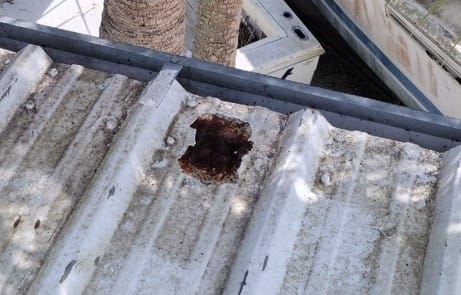When a storm hits, it can leave a path of destruction in its wake. One of the most vulnerable parts of any commercial building is its roof. Assessing storm damage to your roof promptly is crucial to prevent further issues and costly repairs. This guide will help you understand how to evaluate potential storm damage and what steps to take next.
Understanding Different Types of Storm Damage
Before you can assess the damage, it's important to understand the different types of storm damage your commercial roof may suffer.
Wind Damage
High winds can rip off shingles, tear away flashing, and even cause structural damage. Look for missing or loose roofing materials, as well as debris like tree branches that could have hit the roof.
Water Damage
Heavy rain, especially during hurricanes, can lead to leaks and water pooling. Check for signs of water intrusion in the ceiling, such as stains or drips, which indicate that water has penetrated the roofing material.
Hail Damage
Hail can cause dents or cracks in roofing materials, which might not be visible from the ground. Look for these signs, as they can lead to leaks over time.

Conducting a Roof Assessment
Before you climb up to inspect your roof, ensure your safety. If the roof is unsafe to access, consider hiring a professional roofing contractor to conduct the assessment.
Visual Inspection
Start with a visual inspection from the ground. Look for obvious signs of damage, such as missing shingles, debris, or sagging areas. Use binoculars if necessary to get a closer view.
Check Interior Signs
Inspect the interior of your building for signs of water damage or leaks. Water stains on the ceiling or walls can indicate a compromised roof.
Physical Roof Inspection
If it's safe, carefully climb onto the roof for a closer inspection. Pay attention to the following:
- Shingles and Tiles: Look for missing, cracked, or curled shingles.
- Flashing: Check around chimneys, vents, and other roof protrusions for damaged or missing flashing.
- Gutters: Clear any debris from gutters and downspouts to prevent water backup and further roof damage.
- Roof Decking: Examine the roof decking for any signs of rot or damage.
Documenting the Damage
As you conduct your assessment, document the damage thoroughly. Take clear photos of all affected areas and make detailed notes. This documentation will be vital for insurance claims and repair estimates.
Creating a Damage Report
Compile your findings into a comprehensive report that includes:
- Date and time of the storm
- Description of the observed damage
- Photos of damaged areas
- Initial repair estimates or recommendations
Next Steps After Damage Assessment
Once you've assessed the damage, it's time to take action.
Contact Your Insurance Provider
Report the damage to your insurance provider as soon as possible. Provide them with your detailed damage report and photos to expedite the claims process.
Hire a Professional Roofing Contractor
For significant damage, hire a professional roofing contractor to conduct a thorough inspection and provide repair estimates. Ensure they are licensed, insured, and experienced in commercial roofing.
Temporary Repairs
If there are immediate threats, such as active leaks, perform temporary repairs to minimize further damage. This could include covering holes with tarps or sealing leaks with roofing cement.

Preventing Future Storm Damage
Taking steps to prevent future storm damage can save you from costly repairs down the line.
Regular Roof Maintenance
Schedule regular maintenance checks for your roof to catch potential issues before they become significant problems. This includes cleaning gutters, inspecting flashing, and checking for loose shingles.
Install Impact-Resistant Materials
Consider upgrading to impact-resistant roofing materials, which can better withstand hail and debris impact. This investment can increase your building's resilience against future storms.
Secure Loose Items
Ensure all loose items around your building, such as antennas or satellite dishes, are securely fastened to prevent them from becoming projectiles during a storm.
Conclusion
Assessing storm damage to the roof of your commercial building is a critical step in maintaining its integrity and safety. By understanding the types of damage and knowing how to conduct a thorough assessment, you can address problems quickly and prevent further issues. Always prioritize safety and consider professional help for significant damage or if you're unsure about the condition of your roof.
Contact CES Roofing for Expert Storm Damage Inspections and Repair
Don't leave the safety and integrity of your commercial building's roof to chance. Trust the experts at CES Roofing for comprehensive storm damage inspections and reliable repair solutions. Our licensed and experienced team understands the unique challenges posed by storm damage and is dedicated to restoring your roof to optimal condition swiftly and efficiently. Contact CES Roofing today for a consultation and ensure your roof stands strong against future storms.
